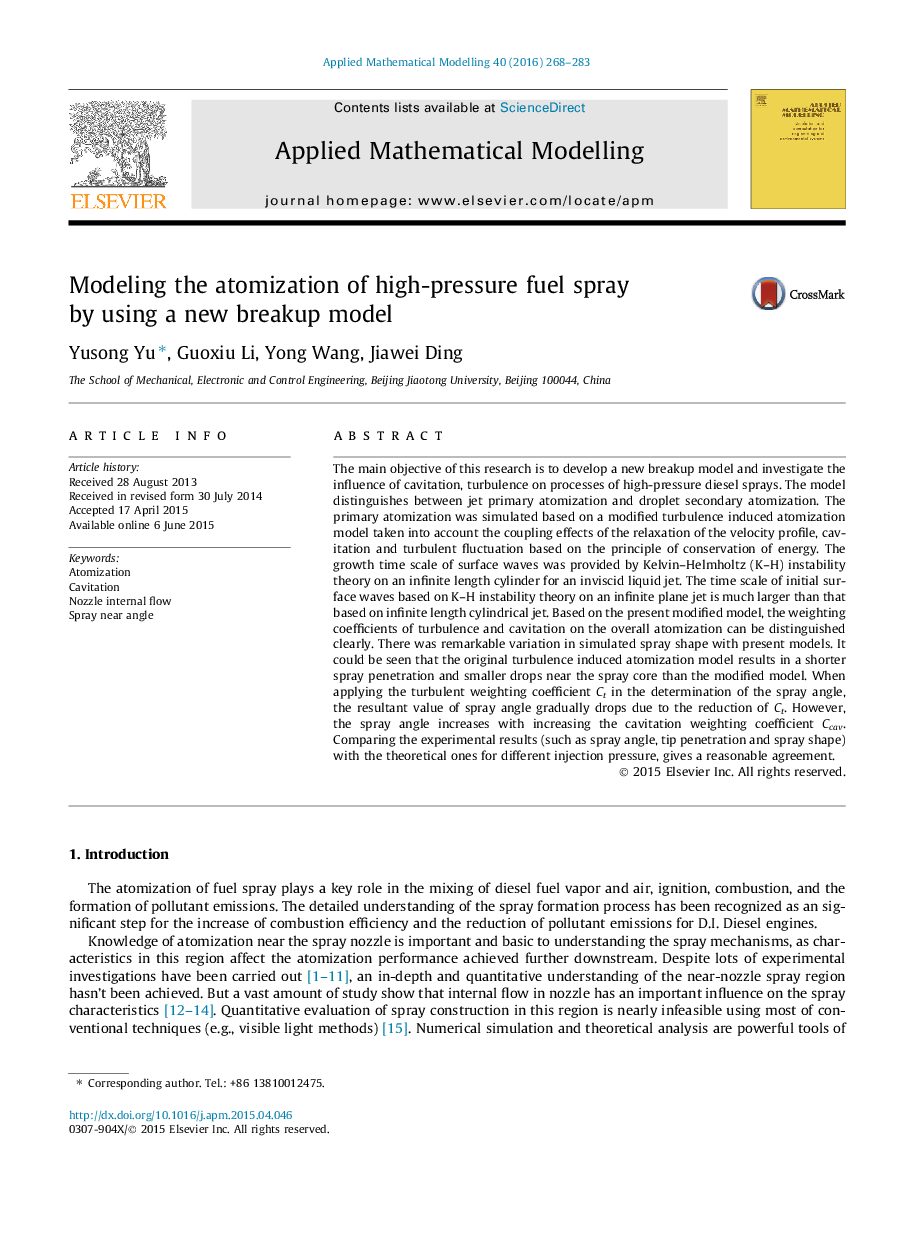| Article ID | Journal | Published Year | Pages | File Type |
|---|---|---|---|---|
| 1703357 | Applied Mathematical Modelling | 2016 | 16 Pages |
The main objective of this research is to develop a new breakup model and investigate the influence of cavitation, turbulence on processes of high-pressure diesel sprays. The model distinguishes between jet primary atomization and droplet secondary atomization. The primary atomization was simulated based on a modified turbulence induced atomization model taken into account the coupling effects of the relaxation of the velocity profile, cavitation and turbulent fluctuation based on the principle of conservation of energy. The growth time scale of surface waves was provided by Kelvin–Helmholtz (K–H) instability theory on an infinite length cylinder for an inviscid liquid jet. The time scale of initial surface waves based on K–H instability theory on an infinite plane jet is much larger than that based on infinite length cylindrical jet. Based on the present modified model, the weighting coefficients of turbulence and cavitation on the overall atomization can be distinguished clearly. There was remarkable variation in simulated spray shape with present models. It could be seen that the original turbulence induced atomization model results in a shorter spray penetration and smaller drops near the spray core than the modified model. When applying the turbulent weighting coefficient Ct in the determination of the spray angle, the resultant value of spray angle gradually drops due to the reduction of Ct. However, the spray angle increases with increasing the cavitation weighting coefficient Ccav. Comparing the experimental results (such as spray angle, tip penetration and spray shape) with the theoretical ones for different injection pressure, gives a reasonable agreement.
